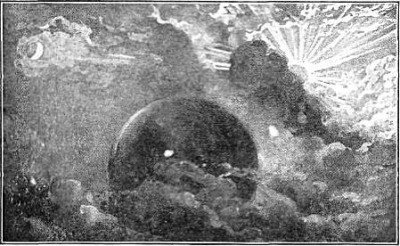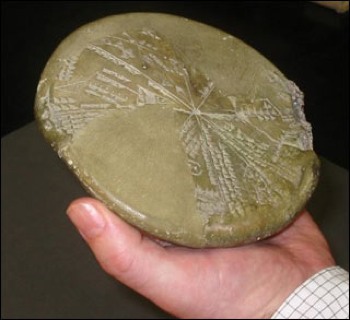 Technology
Technology  Technology
Technology  Humans
Humans 10 Everyday Human Behaviors That Are Actually Survival Instincts
 Animals
Animals 10 Animals That Humiliated and Harmed Historical Leaders
 History
History 10 Most Influential Protests in Modern History
 Creepy
Creepy 10 More Representations of Death from Myth, Legend, and Folktale
 Technology
Technology 10 Scientific Breakthroughs of 2025 That’ll Change Everything
 Our World
Our World 10 Ways Icelandic Culture Makes Other Countries Look Boring
 Misconceptions
Misconceptions 10 Common Misconceptions About the Victorian Era
 Mysteries
Mysteries 10 Strange Unexplained Mysteries of 2025
 Miscellaneous
Miscellaneous 10 of History’s Most Bell-Ringing Finishing Moves
 Technology
Technology Top 10 Everyday Tech Buzzwords That Hide a Darker Past
 Humans
Humans 10 Everyday Human Behaviors That Are Actually Survival Instincts
 Animals
Animals 10 Animals That Humiliated and Harmed Historical Leaders
Who's Behind Listverse?

Jamie Frater
Head Editor
Jamie founded Listverse due to an insatiable desire to share fascinating, obscure, and bizarre facts. He has been a guest speaker on numerous national radio and television stations and is a five time published author.
More About Us History
History 10 Most Influential Protests in Modern History
 Creepy
Creepy 10 More Representations of Death from Myth, Legend, and Folktale
 Technology
Technology 10 Scientific Breakthroughs of 2025 That’ll Change Everything
 Our World
Our World 10 Ways Icelandic Culture Makes Other Countries Look Boring
 Misconceptions
Misconceptions 10 Common Misconceptions About the Victorian Era
 Mysteries
Mysteries 10 Strange Unexplained Mysteries of 2025
 Miscellaneous
Miscellaneous 10 of History’s Most Bell-Ringing Finishing Moves
10 Recent Scientifically Solved Mysteries
Since the beginning of modern science we have been solving the great mysteries around us. Because of recent advances in science and technology we now have the ability to unravel some unknowns like never before. This list consists of 10 such mysteries which, fortunately, do not render any of our previous “unsolved mysteries” lists defunct!
The Ancient Theater of Epidaurus near Athens Greece was constructed in the late 4th century BC and is one of the best preserved ancient theaters. Even in ancient times, the theater was considered to have great acoustics. The actors can be perfectly heard by all 15,000 spectators without amplification. To demonstrate the theaters great acoustics tour guides have their groups scattered in the stands and then show them how faint sounds can be heard at center-stage. How this sound quality was achieved has been the source of academic and amateur speculation for many years. One of the theories suggested that prevailing winds were carrying the sounds. It turns out that that answer is in the seats. In 2007 researchers at the Georgia Institute of Technology have discovered that the limestone material of the seats provide a filtering effect suppressing low frequencies of voices, thus minimizing background crowd noise so the seats act as natural acoustic traps. It is still unknown whether the acoustic properties are the result of an accident or the product of advanced design.
Interesting Fact: The orchestra (or dancing floor) has the shape of a perfect circle, with a diameter just above 19,50 meters. A circular base still preserved at its exact center most probably held an Altar to Dionysos (The Greek god of wine). You can watch and hear a demonstration of the theaters great acoustics here.
Most people are familiar with crystal skulls from the film Indiana Jones and the Kingdom of the Crystal Skull. However there are actually many serious crystal skull collectors that claim they are pre-Columbian and were made during the Aztec or Maya civilizations and exhibit paranormal phenomena. In 2008 a team of British and American researchers using electron microscopy and X-ray crystallography examined skulls from the British Museum and Smithsonian. A detailed analysis of the skull’s surface revealed minute rotary scratch marks around the eye sockets, teeth and cranium. This was clear evidence that the skull was cut and polished with a wheeled instrument – and the Aztecs never used the wheel. The researchers concluded that the skulls were cut from a piece of Brazilian rock crystal in Europe. They were then probably sold to collectors as a relic from the ancient Aztec civilization. Many museums now have removed the skulls from display because of their questionable origins.
Interesting Fact: For the hardcore crystal skull fans out there I should mention the Mitchell-Hedges Skull which is probably the most famous skull of all. It was allegedly discovered in 1924 by the adopted daughter of British adventurer author F.A. Mitchell-Hedges. Hedges claimed that the crystal skull dates back at least 3,600 years. Detailed examination like the experiments mentioned above have never been done on this skull because the present owner of the skull will not allow testing.
On May 19, 1780 an unusual darkening of the day sky was observed over the New England states and parts of Canada. Since communication of the day was very primitive, some people in New England applied religious interpretations to the event. Even today New England’s Dark Day is still regarded by many as a supernatural event. Different explanations were discussed from volcanic eruptions to celestial cataclysms. In 2008 Nearly 230 years later, University of Missouri researchers combined written accounts and tree ring records from fire-damaged trees to determine that the dark day was caused by massive wildfires burning in Canada. During a fire the heat goes through the bark, killing the living tissue then a couple of years later the bark falls off revealing the wood and an injury to the tree. The researchers studied tree rings from the Algonquin Highlands of southern Ontario and many other locations. They found evidence that a major fire had burned in that time period that would have affected atmospheric conditions hundred of miles away. Large smoke columns were created and carried into the upper atmosphere accounting for New England’s dark day.
Interesting Fact: Accounts of ‘New England’s Dark Day’ include mentions of midday meals by candlelight, night birds coming out to sing, flowers folding their petals and strange behavior from animals.
The Cydonian region on Mars attracted a great deal of attention because one of the hills in that region looked remarkably man made. The region was first imaged in detail by the Viking 1 orbiter that was launched in 1975. Several images were taken by the Viking including one taken in 1976 showing one of Cydonian mesas had the appearance of face. Scientist dismissed the face as a trick of light and shadow but then a second image also showed the face at a different sun-angle. This caught the attention of organizations interested in extraterrestrial intelligence and some talk show hosts who believed the Face was a long-lost Martian civilization. Most scientists still held the belief that the face was just a consequence of viewing conditions. In 2003 when the European space agency launched Mars Express it was able to combine data from a high resolution stereo camera and create a 3D representation of the “Face on Mars”. The most recent image (bottom) I think would silence even the most faithful believers. The image shows a remnant massif thought to have formed from landslides and an early form of debris apron formation but no face in sight.
Interesting Fact: The Cydonia area is of great interest to planetary scientists because of their location. The mesas are in a transition zone between cratered highlands to the south and smoother lowland plains to the north. Some think the northern plains are all that’s left of an ancient Martian ocean.
The fascinating aspect of the barreleye fish is the tubular eyes which are excellent at collecting light at depths up to 2500m. The puzzling part is that the eyes appear to be fixed in place directly above its head. This had baffled physiologists for decades because it would be almost impossible for the fish to look for food. Recently scientists using a remotely operated vehicle studied the fish at depths ranging from 600-800 meters. They discovered a previously unknown fact, the tubular eyes exist behind a transparent fluid filled dome and the eyes can rotate within a transparent shield that covers the fish’s head. This allows the fish to peer up at potential prey or focus forward to see what it is eating. The Barreleye Fish was first discovered in 1939 but the transparent nature of the fish wasn’t known because when the fish was caught in nets at a different depth of water the see through part is destroyed.
Interesting Fact: Keep in mind when you look at the above picture that the two small holes in front of the fish are not eyes. The eyes are the two green domes inside the top of the head. You can see a clip of the barreleye fish swimming around here.
Checkers (Draughts) has been around for more than 400 years and has been enjoyed by millions of players. Since 1989 computers have worked around the clock to try and decipher the game’s 500 billion billion possible moves. In 1992, a computer was narrowly defeated by world champion Marion Tinsley who is widely regarded as the best human checkers player ever. Finally in 2007 a computer program called Chinook developed by researchers at the University of Alberta can now play a perfect game of checkers. In 2007 using between 200 desktop computers at the peak of the project Chinook can recognize every possible move made in a checkers game and determine the correct counter move. If neither player makes a mistake the game will end in a draw.
Interesting Fact: Checkers is the largest game that has been solved to date, with a search space of 5×10^20. The number of calculations involved was 10^14 and it was done over a period of 18 years.
Days after the Titanic sank the body of a baby boy was found and recovered from the North Atlantic. After the child could not be identified he was buried in Nova Scotia with a tombstone reading simply ‘The Unknown Child’. In 2001 researchers at Lakeland University in Ontario were granted permission to exhume the body. By consulting the passenger lists they had narrowed down the possible identity to one of four children: Gosta Paulson, Eino Panula, Eugene Rice and Sidney Goodwin. Initial tests concluded that the body was Eino Panula. However in 2007 this was shown to be not true. More advanced DNA testing was carried out on a tooth from the body and when compared to the DNA of a surviving Goodwin relative it proved an indisputable match. It confirmed that ‘the unknown child’ was Sidney Goodwin. Sidney was the youngest of six children born to Fred and Augusta Goodwin from Fulham, England and were immigrating to Niagara Falls New York. (All were onboard) Neither Sidney’s parents nor his siblings’ bodies were ever recovered. You can see a photo of the rest of the family here.
Interesting Fact: The sailors aboard the recovery ship were very upset by the discovery of the unknown boy’s body and paid for his monument. He was buried on 4 May 1912 with a copper pendant placed in his coffin by recovery sailors that read “Our Babe”. You can see the grave monument here.
This could be a case of one scientifically solved mystery solving another so I will try and explain the second one under “Interesting Facts” The circular clay tablet shown above was discovered 150 years ago at Nineveh the capital of ancient Assyria, in what is now Iraq. The tablet shows drawings of constellations and pictogram-based text known as cuneiform which was used by the Sumerians, the earliest known civilization in the world. For decades scientists have failed to decipher the tablet. In 2008 two scientists, Alan Bond and Mark Hempsell from Bristol University finally cracked the cuneiform code. By using a computer program that can reconstruct the night sky thousands of years ago. The two scientists were able to establish the tablet was a night notebook of Sumerian astronomers and refers to the events in the sky before dawn on the 29th of June 3123 BC (Julian calendar).
Interesting Fact: What makes this discovery even more amazing is the tablet also shows a large object travelling along the constellation of Pisces. The symbols show the trajectory of the object to an error of one degree to hit Köfels Austria. Köfels is recognized as the area of the largest rockslide in the crystalline Alps and has given rise to numerous theories about the cause of the rockslide. There is no crater so to modern eyes it doesn’t look as a meteor impact site should look. However from the information gathered from the tablet, the trajectory explains why there is no crater. The in-coming angle was very low (six degrees) so the scientists theorize that the asteroid clipped a near by mountain called Gamskogel and this caused the asteroid to explode before it reached its final impact point. To explain how they were able to get this much information from this little tablet is above my pay grade. You can see a picture of the rockslide area here.
In 2001 a Hammerhead shark was born at the Henry Doorly Zoo in Nebraska with three potential mothers in the same tank. All had been in captivity for at least three years. The birth of the shark baffled scientists for years. Some scientists thought one of them might have mated before being captured and stored the sperm for fertilization. Some scientist believed that sharks might be able to reproduce asexually through a rare method known as parthenogenesis (a direct development without the need of a sperm). Many were skeptical but in late 2007 scientists confirmed this through DNA testing. After they determined which of the three females was the mother they subtracted the mother’s contribution from the offspring and in this particular case after the DNA was subtracted there was nothing left. The researchers were forced to conclude that the pup had no father, making this he first documented case of asexual reproduction of a shark.
Interesting Fact: In 2008 Scientists confirmed a second virgin birth of a shark at the Virginia Aquarium & Marine Science Center. A 5-foot, 94-pound Atlantic blacktip shark died of stress-related complications related to her unknown pregnancy. During the necropsy a 10-inch shark pup was found surprising aquarium officials. DNA testing on the embryonic pup proved that the pup carried no genetic material from a male.
This is at the number one spot because it inspired the list. As I was growing up I used to hear when you take in consideration a bees wingspan along with the bees weight ratio it is aerodynamically impossible for them to fly. I also used to hear the only reason a bee can fly is because it thinks it can. I always thought that was a really cool explanation even though I knew it was probably not true. Scientists had many theories but were not able to explain exactly how the un-aerodynamic bee was able to fly. Finally in 2005 with the assistance of high-speed cinematography and mechanical models of the bee’s wings, scientists were able to put this perplexing mystery to rest. As it turns out the bee flap its wings an amazing 230 times per second, much faster than smaller insects. Their analysis revealed sufficient lift was generated by unconventional combination of short, choppy wing strokes, a rapid rotation of the wing as it flops over and reverses direction, along with a very fast wing-beat frequency.
Interesting Fact: In order to understand more how bees fly their heavy little bodies around, the researchers forced them to fly in a small chamber filled with a mixture of oxygen and helium which is less dense than regular air. (As if the aerodynamically challenged bees didn’t have enough on their plate) This required the bees to work harder to fly and gave the scientists a chance to observe the bee’s wings and body under stressful conditions. You can watch a bee’s flight in super slow motion here.
The reason for bellybutton lint has been the subject of mystery and speculation for many years. Now after three years of research and chemical analysis of 503 pieces of lint from his own bellybutton, chemist Georg Steinhauser from Vienna University has revealed the secret. The pieces of fluff were not made up of only cotton from clothing but there were also flecks of dead skin, fat, sweat and dust. His observations also showed that abdominal hair often seems to grow in concentric circles around the navel and act like a kind of barbed hooks. Dr Steinhauser established that shaving one’s belly will result in a lint-free navel.
Interesting Fact: I should also give credit to another research scientist and radio/TV personality Karl Kruszelnicki (Dr Karl) from Australia. Several years earlier he studied bellybutton lint samples sent to him by almost 5,000 people and found some similar findings and that the typical lint producer was “a slightly overweight, middle-aged male with a hairy abdomen”. The photo above is a 25 year collection of bellybutton lint from another Australian Graham Baker. This gave him a place in the Guinness Book of Records.



















